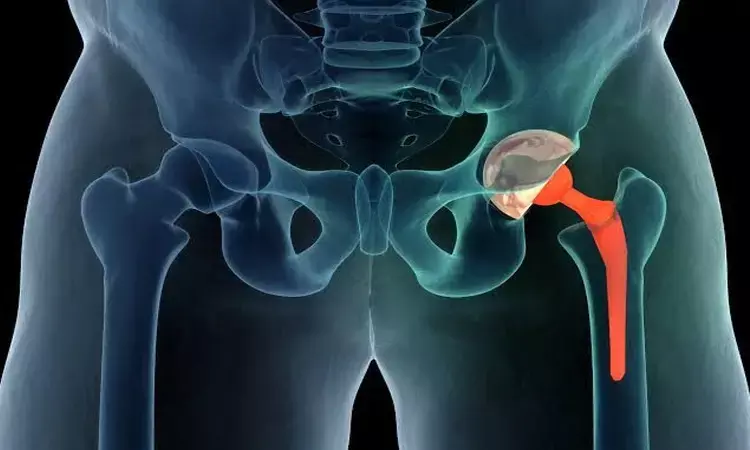- Home
- Medical news & Guidelines
- Anesthesiology
- Cardiology and CTVS
- Critical Care
- Dentistry
- Dermatology
- Diabetes and Endocrinology
- ENT
- Gastroenterology
- Medicine
- Nephrology
- Neurology
- Obstretics-Gynaecology
- Oncology
- Ophthalmology
- Orthopaedics
- Pediatrics-Neonatology
- Psychiatry
- Pulmonology
- Radiology
- Surgery
- Urology
- Laboratory Medicine
- Diet
- Nursing
- Paramedical
- Physiotherapy
- Health news
- Fact Check
- Bone Health Fact Check
- Brain Health Fact Check
- Cancer Related Fact Check
- Child Care Fact Check
- Dental and oral health fact check
- Diabetes and metabolic health fact check
- Diet and Nutrition Fact Check
- Eye and ENT Care Fact Check
- Fitness fact check
- Gut health fact check
- Heart health fact check
- Kidney health fact check
- Medical education fact check
- Men's health fact check
- Respiratory fact check
- Skin and hair care fact check
- Vaccine and Immunization fact check
- Women's health fact check
- AYUSH
- State News
- Andaman and Nicobar Islands
- Andhra Pradesh
- Arunachal Pradesh
- Assam
- Bihar
- Chandigarh
- Chattisgarh
- Dadra and Nagar Haveli
- Daman and Diu
- Delhi
- Goa
- Gujarat
- Haryana
- Himachal Pradesh
- Jammu & Kashmir
- Jharkhand
- Karnataka
- Kerala
- Ladakh
- Lakshadweep
- Madhya Pradesh
- Maharashtra
- Manipur
- Meghalaya
- Mizoram
- Nagaland
- Odisha
- Puducherry
- Punjab
- Rajasthan
- Sikkim
- Tamil Nadu
- Telangana
- Tripura
- Uttar Pradesh
- Uttrakhand
- West Bengal
- Medical Education
- Industry
Bacterial DNA screening may help predict surgical site infection risk in orthopaedic patients

Bacterial colonization of relevant anatomic sites can act as multiple sources of surgical site infections for patients, suggests a study conducted by Preston N.Wolfe and colleagues from the University of Missouri, Thompson Laboratory for Regenerative Orthopaedics, Missouri Orthopaedic Institute, USA.
Surgical site infection is defined as pain, erythema, swelling and discharge from wound site. Surgical site infection in orthopaedic surgery may lead to long hospital stay, cost to the patient and is a burden on health care facilities. It increases rate of nonunion, osteomyelitis, implant failure, sepsis, multiorgan dysfunction and even death.
The research is published in the Journal of Orthopaedics.
Total hip arthroplasty, or surgical replacement of the hip joint with an artificial prosthesis is a reconstructive procedure that has improved the management of those diseases of the hip joint that have responded poorly to conventional medical therapy.
Globally, hip fractures are among the top 10 causes of disability in adults. For displaced femoral neck fractures, there remains uncertainty regarding the effect of a total hip arthroplasty as compared with hemiarthroplasty.
Over 50,000 total hip replacement operations are performed annually in the United Kingdom and about 200,000 are performed annually in the United States. The majority of patients undergoing hip replacement experience dramatic relief of pain and restoration of satisfactory hip function. Aseptic mechanical loosening is reported to be the most common cause of prosthetic joint failure, after which standard bacteriological culture of specimens from periprosthetic tissue or aspirates is used to detect infection
The team of researchers aimed to provide an initial characterization of relevant bacterial DNA profiles for patients undergoing closed-fracture fixation or total joint arthroplasties.
Swabs were collected and analyzed using polymerase chain reaction from adult patients undergoing closed-fracture fixation or total shoulder, knee, or hip arthroplasties.
The authors showed that the bacterial DNA profiles varied across the different orthopaedic patient populations, and produced uncharacteristic profile shifts with direct relevance to each clinical infection.
Hence, it was concluded that the findings of the study provide a foundational dataset regarding bacterial colonization of relevant anatomic sites that can act as sources of surgical site infections for patients.
https://doi.org/10.1016/j.jor.2021.08.012
Dr. Nandita Mohan is a practicing pediatric dentist with more than 5 years of clinical work experience. Along with this, she is equally interested in keeping herself up to date about the latest developments in the field of medicine and dentistry which is the driving force for her to be in association with Medical Dialogues. She also has her name attached with many publications; both national and international. She has pursued her BDS from Rajiv Gandhi University of Health Sciences, Bangalore and later went to enter her dream specialty (MDS) in the Department of Pedodontics and Preventive Dentistry from Pt. B.D. Sharma University of Health Sciences. Through all the years of experience, her core interest in learning something new has never stopped. She can be contacted at editorial@medicaldialogues.in. Contact no. 011-43720751
Dr Kamal Kant Kohli-MBBS, DTCD- a chest specialist with more than 30 years of practice and a flair for writing clinical articles, Dr Kamal Kant Kohli joined Medical Dialogues as a Chief Editor of Medical News. Besides writing articles, as an editor, he proofreads and verifies all the medical content published on Medical Dialogues including those coming from journals, studies,medical conferences,guidelines etc. Email: drkohli@medicaldialogues.in. Contact no. 011-43720751


